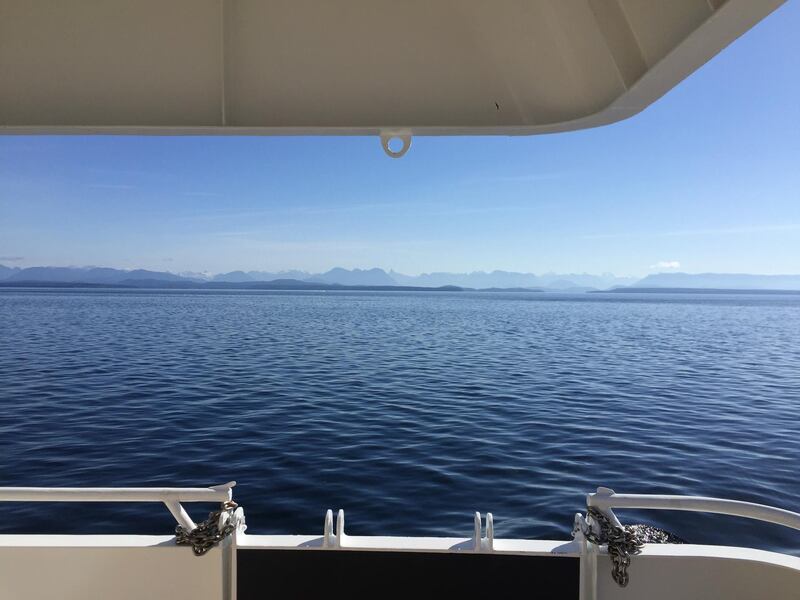From having a glorious fortnight ahead of you on a two-week cruise, it’s amazing how quickly the days slip by and suddenly, unbelievably, you’re reaching the end.
So it was with my 1,600-kilometre journey northwards through the Inside Passage – an incredibly leisurely trip from the coast of Washington state to Canada's British Columbia, then back into the US as you reach Alaska.
Despite it not being peak wildlife season – whale-watching and bear-watching are best in July and August – we saw dozens of whales, including a rare fin whale, on our journey north, and hundreds of dolphins, porpoises, sea otters, sea lions and sea birds within the first few days.
____________________
Part 1: passage to Alaska
____________________
The Safari Explorer's book and DVD library was excellent, and one of the books I read was Jonathan Raban's 1999 book Passage to Juneau, in which he sails a 35-foot boat along more or less the same route, and intersperses the narrative with historical snapshots of Captain George Vancouver and other colonial explorers, including their encounters with native Alaskans. The book is somewhat stiff but informative, and the writing at times seems to mirror the dark mood of the sea.
As I was reading the book we had mostly unseasonably warm and sunny weather, and I was amazed at how few other ships we saw en route. Outside the main fishing season and out of the way of large cruise ships for which many of these channels are too narrow, the environment seems pristine.
Yet as Dr Caroline Fox, a resident naturalist travelling with us, underlined, human destruction in the form of whaling, the senseless killing of sea birds, and other creatures believed to be competing with humans for fish – and simply for their fur – not to mention the huge island of floating garbage farther west in the Pacific – means one would have to be repellently insensitive to think that everything is hunky dory. The only positives are that we've stopped most of the deliberate killing of whales, other marine mammals and birds and that some creatures, hunted literally to the brink of extinction, have somehow saved themselves. I also felt some unease in eating rather excessive, fish-animal-rich three-course lunches and dinners every day – although I simultaneously enjoyed them.
I am always cheered to find places that have escaped logging, building and pollution, or recovered from them. Almost the whole of south-east Alaska is made up of the 17 million acre Tongass National Forest and this, combined with several other adjacent national parks and wilderness acres, makes it the second-biggest protected area after Antarctica.
____________________
Read more from Rosemary:
A stay in the 'in-between' zone
Reverse culture shock in London
____________________
The Wilderness Act, passed in 1964, is one of America's greatest gifts to itself, its people and the world, protecting 9 million acres of land in total. Wilderness is tightly defined and defended. It goes beyond parks and reserves and certainly doesn't include resorts. These areas are undeveloped, untrammelled, with no human structures.
In these areas of south-east Alaska, I hiked through centuries-old forests without trails or roads, and kayaked in hidden fjords backed by waterfalls, mountains and glaciers. The water is deep and clean and the air is pure. Yes, most of the glaciers are slowly melting and, unforgivably, the hunting of wild bears is still allowed in some areas. But here, human traces are few and in this environment, paradoxically, one feels more human.





